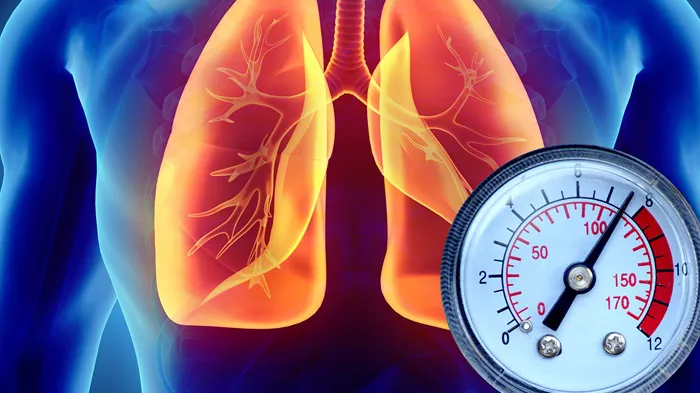Pulmonary hypertension (PH) is a condition characterized by elevated blood pressure in the pulmonary arteries, which carry blood from the heart to the lungs. This increased pressure can lead to various symptoms and complications, affecting the overall function of the heart and lungs. Borderline pulmonary hypertension refers to a specific range of pulmonary artery pressure that is elevated but does not meet the criteria for a definitive diagnosis of pulmonary hypertension.
What Is Borderline Pulmonary Hypertension?
Borderline pulmonary hypertension (bPH) is a pulmonary artery hemodynamic state between normal pulmonary artery pressure and/or resistance and the diagnostic criteria for pulmonary hypertension (PH), and is a “gray area” that has been ignored for a long time. In recent years, with the progress of clinical research and diagnosis and treatment in the field of PH, evidence-based medicine suggests that bPH is not only the early stage of the development of PH, but also closely related to the patient’s re-hospitalization rate and mortality rate.
SEE ALSO: 6 Reasons Why BP Top Numbers Are Too High
Diagnostic Criteria for Pulmonary Hypertension
The diagnosis of pulmonary hypertension is typically made based on the mean pulmonary artery pressure (mPAP) measured during right heart catheterization. According to current guidelines, pulmonary hypertension is defined by an mPAP of 25 mmHg or higher at rest. However, borderline pulmonary hypertension falls within a narrower range of pressures, typically between 21 mmHg and 24 mmHg at rest.
Causes And Risk Factors
Borderline pulmonary hypertension can result from various underlying conditions and risk factors. Some of the common causes and risk factors include:
Chronic Lung Diseases: Conditions such as chronic obstructive pulmonary disease (COPD), interstitial lung disease, and sleep apnea can contribute to increased pulmonary artery pressures.
Connective Tissue Disorders: Diseases like systemic sclerosis and lupus may lead to pulmonary vascular changes and elevated pulmonary pressures.
Heart Diseases: Left heart conditions such as heart failure with preserved ejection fraction (HFpEF) can cause elevated pressures in the pulmonary circulation.
Genetic Factors: In some cases, genetic predispositions may play a role in the development of pulmonary hypertension.
Environmental Exposures: Exposure to high altitudes or certain toxins can also contribute to pulmonary vascular changes.
Clinical Presentation
Patients with borderline pulmonary hypertension may present with nonspecific symptoms such as exertional dyspnea (shortness of breath with activity), fatigue, chest discomfort, and exercise intolerance. These symptoms may be mild initially but can progress as the condition worsens.
Diagnostic Evaluation
Diagnosing borderline pulmonary hypertension requires a comprehensive evaluation, including:
Medical History: Gathering information about the patient’s symptoms, medical conditions, and family history can provide valuable insights.
Physical Examination: A thorough physical examination may reveal signs such as elevated jugular venous pressure, a prominent pulmonic component of the second heart sound (P2), and signs of right heart strain.
Diagnostic Tests: This may include echocardiography, pulmonary function tests, chest imaging (X-ray or CT scan), and blood tests to assess for underlying causes such as autoimmune diseases or clotting disorders.
Right Heart Catheterization: The gold standard for diagnosing pulmonary hypertension involves measuring pressures in the pulmonary arteries using a catheter inserted into the heart.
Management And Treatment
The management of borderline pulmonary hypertension focuses on addressing underlying causes and optimizing overall cardiovascular health. Treatment strategies may include:
Lifestyle Modifications: Encouraging smoking cessation, promoting regular exercise within the patient’s capabilities, and maintaining a healthy diet can positively impact pulmonary vascular health.
Medications: Depending on the underlying cause and severity of symptoms, medications such as pulmonary vasodilators, diuretics, and anticoagulants may be prescribed.
Monitoring: Regular follow-up visits and monitoring of pulmonary pressures are essential to track disease progression and treatment response.
Surgical Options: In some cases, surgical interventions such as pulmonary thromboendarterectomy or lung transplantation may be considered for severe or refractory cases.
Prognosis And Outlook
The prognosis for patients with borderline pulmonary hypertension varies depending on the underlying cause, the presence of comorbidities, and the response to treatment. Early detection, comprehensive management, and close monitoring can help improve outcomes and quality of life for affected individuals.
Conclusion
Borderline pulmonary hypertension represents a spectrum of pulmonary artery pressures that are elevated but fall below the diagnostic threshold for pulmonary hypertension. It often accompanies underlying medical conditions such as lung diseases, heart disorders, or genetic predispositions. Timely diagnosis, appropriate management strategies, and ongoing monitoring are crucial in optimizing outcomes and addressing the needs of patients with borderline pulmonary hypertension.

